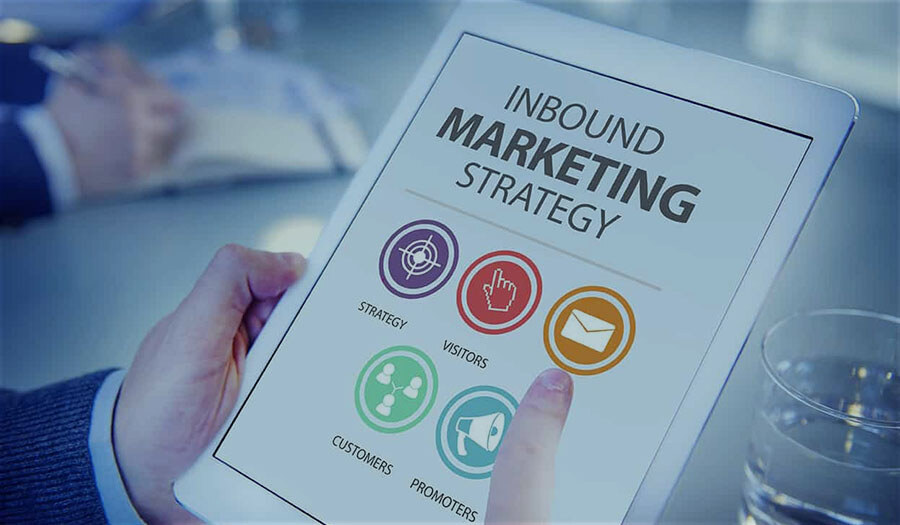What is Lead Scoring and how can you set it up within HubSpot?
Find out what lead scoring is and how to set it up from HubSpot, what it's for, its benefits to your buyer personas and customer experience.
By Role
By Industry
By Target Customer
What We Offer
We drive business growth by improving operational efficiency through process optimization, smart automation, and cost control. Our approach boosts productivity, reduces expenses, and increases profitability with scalable, sustainable solutions
Customer Experience
We design memorable, customer-centered experiences that drive loyalty, enhance support, and optimize every stage of the journey. From maturity frameworks and experience maps to loyalty programs, service design, and feedback analysis, we help brands deeply connect with users and grow sustainably.
Marketing & Sales
We drive marketing and sales strategies that combine technology, creativity, and analytics to accelerate growth. From value proposition design and AI-driven automation to inbound, ABM, and sales enablement strategies, we help businesses attract, convert, and retain customers effectively and profitably.
Pricing & Revenue
We optimize pricing and revenue through data-driven strategies and integrated planning. From profitability modeling and margin analysis to demand management and sales forecasting, we help maximize financial performance and business competitiveness.
Digital Transformation
We accelerate digital transformation by aligning strategy, processes and technology. From operating model definition and intelligent automation to CRM implementation, artificial intelligence and digital channels, we help organizations adapt, scale and lead in changing and competitive environments.
Operational Efficiency
We enhance operational efficiency through process optimization, intelligent automation, and cost control. From cost reduction strategies and process redesign to RPA and value analysis, we help businesses boost productivity, agility, and sustainable profitability.
Customer Experience
Marketing & Sales
Pricing & Revenue
Digital Transformation
Operational Efficiency
4 min read
Por Alfonso Ramírez | May 29, 2025
4 min read
Por Alfonso Ramírez | May 29, 2025
Through Suzuki's success story, learn how this giant of the automotive manufacturing industry accelerated its growth in sales and traffic to its website by applying inbound methodologies.
Before addressing what led to Suzuki's tremendous growth in sales and traffic, we will go back to the time and place where it originated.
Despite its great recognition and precise value proposition, it was around 2016 when Suzuki had to employ in one of its essential territories, such as its South African headquarters operation, essentially creative and calculated strategies concerning its marketing budget. Also, this gave several latent obstacles at the time, such as, for example, a South African economy in recession, which would imminently affect the sale of its fleet, in addition to requiring to highlight its differentiation within the market.
In this article, we will address the following thematic line:
That said, we can get started.
What is an Inbound Methodology?
In essence, an inbound methodology is recognized as a set of strategies with a focus that directly seeks to intertwine the development and growth of your organization or company strictly with the creation and promotion of the generation of valuable, meaningful relationships that transcend over time with your consumer segments, qualified or unqualified prospects and your customer or Buyer Persona.
Inbound methodologies, we want to find qualified prospects to meet, interact and go through a nurturing process in which your company will provide the right content at the right time. This methodology applies to several business areas, such as marketing, sales, customer service, and human resources.
This appliance will ensure that the potential customer gets into a high-trust relationship with your company instead of requiring or using mass advertising to anyone who is not your ideal customer or is not in the process of awareness, consideration, or decision regarding your company's offers.
In case you want more context and to expand your knowledge of this methodology and its subcategories according to your business areas, I recommend you to read our following articles:
Suzuki's Adaptation Process to Inbound Methodologies
Regarding the impending problem that Suzuki was going through in entering the South African market, the company discovered that adapting to Inbound methodologies required a constant learning curve. The following scenarios were presented to the company through implementation as possible catalysts for continuous improvement. These would eventually be the set of solutions it needed to solve its business problems, such as:
1) Definition of its Buyer Personas: This is the most crucial process for any company. Buyer personas are those semi-fictitious representations of how the ideal customer should be for any company. From them, when implementing Inbound strategies, differentiated strategies will be derived according to the types of customers that your company has recognized.
You must develop content in a differentiated "language" of value for each Buyer Persona, emphasizing what interests them and defining a "journey" that enhances and improves the customer experience.
This whole process requires defining, diagramming, and lifting for the success in sales of any company. If you like to deepen your knowledge of this consultative methodology, I recommend you to read our following articles:
2) The culturalization of intelligent and valuable content creation: Suzuki needed to generate differentiation and build a special relationship with his prospects and customers to make the methodology work. The Inbound methodology cultivates and nurtures prospects through content generation, taking them through the stages that lead to buying products and services, better known as the Buyer's Journey.
Some examples of content:
The lead nurturing process has a logic that must be developed in a sequential strategy (not only from the content generation but also from the automated reasoning behind it). For Suzuki to adapt, they needed to understand the structure of the methodology. Within the development of their Buyer Personas, they realized that their commercial efforts should be applied to different Buyer Personas, not only to a single type of customer as previously believed before the study. As further detailed in the HubSpot case study.
Imagine the following use case applies to your company:
"If your company applied the Buyer Persona design methodology, at the end of the process, you identified that you have ten distinct Buyer Personas."
The design and development of Buyer Personas is something that a company should take seriously. Instead, with them, it is necessary to apply strategic methodologies to define goals and objectives that should be drawn with them at a commercial level every month.
Here is where the following strategies need to be applied:
Strategy planning by Buyer Persona: This implies that you must have differentiated communication within your marketing strategies and strategic communication with each customer. Each one has different pain points, needs, and consumption habits.
Content generation: For practical purposes, the journey of these customers is particular, so ten is required to generate intelligent content for each stage of nutrition. All this translates into 30 pieces of content according to awareness, consideration, and decision stages.
If generating intelligent and valuable content is of interest to you, I recommend reading the following articles:
Automation of the lead nurturing process: Content is not enough, prospects can see it and interact with it, but the important thing is to make the prospect continue its conversion process to become a customer, which becomes critical marketing and sales automation. Suppose those ten types of Buyer Persona require at least one piece of content per stage (30 amounts in total). In that case, each involves automation to give continuity to the process and can be translated into 30 automation for it.
Do you require to deepen or develop automation to improve efficiency, management control management, or streamline your business processes? I recommend our articles on:
3) Implementing lead qualification strategies: Although generating intelligent content using inbound methodologies for many companies is not an issue, a crucial factor must be used in the strategic business landscape. The use of a lead scoring strategy such as Lead Scoring.
With lead scoring strategies, your company sets boundaries regarding all those implicit and explicit factors that your Buyer Persona must meet to move to the next level of their lifecycle stage. Also, this is where companies will define the positive or negative scoring criteria that will affect their leads according to the interaction with your company.
Lead Scoring contributes to the alignment of marketing and sales regarding the conversion process of the following stages of any contact's lifecycle:

Acceleration Results & Benefits of Implementing Inbound Methodologies
By implementing inbound methodologies, Suzuki achieved highly satisfactory results from its online sales. It exponentially increased traffic to its website by 12.5 times more than before the inbound methodology came into its plans.
"From 2,000 visitors a month to 25,000."
"The market share increased from 1.53% to 2.17%. Year over year, our sales are up 21.3%; that's significant when the overall automotive market is down 2.3%."
All this is according to Charl Grobler, National Marketing and Product Planning Manager of Suzuki South Africa.
If your company still needs to use methodologies to nurture leads, improve your conversion rates, want to generate intelligent content, and lack automation to track leads through each stage of the lifecycle you are in. At Imagineer, we would happily support you and schedule a consulting session with one of our consultants.

Find out what lead scoring is and how to set it up from HubSpot, what it's for, its benefits to your buyer personas and customer experience.

Setting up and establishing a business has never been simpler, but growing a business is the real challenge. Where once short-sighted strategies were...

Social media has become a critical medium for key contact with our prospects and potential customers, this contact is formed by actively researching...